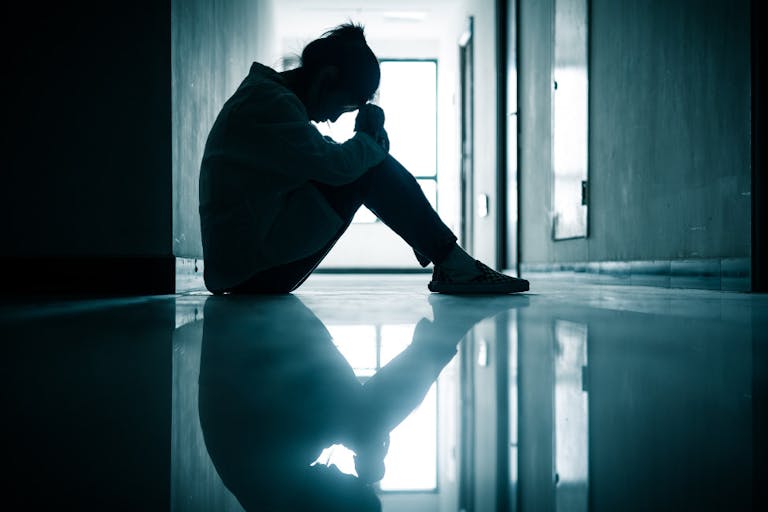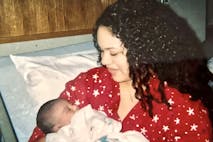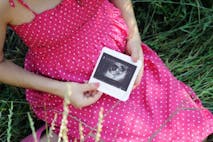
Scotland's Catholic bishops speak out against 'buffer zone' law
Bridget Sielicki
·
Teen grieves after being coerced into abortion by her ‘Christian’ parents
(Sarah Terzo – Substack) Claudia Paulk published a book about the trauma she suffered after a coerced abortion.
Paulk’s parents were Christians and very active in their church.
She became pregnant at 19. Her boyfriend responded with “joy and positive emotions.” They both wanted the baby.
A few days after the pregnancy test, the couple went out. Paulk says:
It was one of the only wonderful memories I had of my pregnancy because it was the last time I was joyful about becoming a mother. For a moment, everything seemed blissful as I felt confident about my life with a growing belly.
But her relationship with her boyfriend was far from ideal. He’d once pushed her while drunk, and she saw a red flag. So, she planned to end the relationship, and if needed, fight for custody.
P[a]ulk was living at home and dependent on her parents, and without a solid relationship with her boyfriend, she needed their support.
Paulk had already told her mother she was sexually active. Her mother had only smiled and thanked Paulk for telling her. P[a]ulk doesn’t mention anything about her mother discouraging her or talking about birth control.
But when Paulk told her mother she was pregnant, her mother was furious.
Paulk says:
I felt her disappointment when she wouldn’t look me in the eyes, and she refused to get close to me… Her words broke me into a million pieces as she said, ‘You are not keeping this baby, I am taking you to have an abortion.’
Paulk’s stepfather agreed.
Paulk pleaded with her mother, but the more she begged to keep her baby, the angrier her mother became.
A few days went by, and Paulk desperately hoped her mother would change her mind. She says, “I hoped that under her anger and disappointment, my mother would grow a soft and caring heart overnight for the child that I was carrying, or at least for me.”
But her mother made the abortion appointment.
Paulk doesn’t really know why her Christian parents demanded she have an abortion, but she wonders if their fear of what others in the church would think played a role.
She had always wanted her parents’ approval and was terrified of raising a baby and going through a court battle on her own.
Even though P[a]ulk’s boyfriend was excited about being a father and had been picking out baby names, he gave in to her mother’s demands and agreed to pay for half the abortion.
After the arrangements were made, Paulk says, “It seemed as though I wasn’t being neglected as much. Therefore, I knew what I needed to do to gain my parents’ love and respect.”
She says that sitting in the abortion facility waiting room felt “gut-wrenching.”
She begged her boyfriend to come to the facility with her, but he left during the abortion, wrestling with his own grief.
When the abortion worker called her name, Paulk said she felt as though she were “trying to run away from a serial killer chasing after me with a machete.”

Staff did an ultrasound, but refused to let her see her baby:
I desperately wanted to see him. I wanted to see my baby. I wanted to see how big he was, I wanted to hear his heartbeat… I wasn’t allowed to. The technician hid the screen away from my sight as she took measurements of my baby.
P[a]ulk was haunted by the thought that the only people on earth who saw her baby were the ones who killed him.
The night after the abortion, her parents went to Bible study, leaving Paulk alone, lying in the dark and crying. She wrote a poem dedicated to her baby, hoping that, somehow, the message would get to him.
Her boyfriend came over. Her parents had forbidden her to see him, but she says, “I was tired of following their rules and trying to be the perfect daughter who desperately wanted their approval about everything.”
She and her boyfriend tried to comfort each other, she says, “two grieving parents holding each other.”
After the abortion, P[a]ulk was consumed with grief:
I laid in bed for what seemed like an eternity; my eyes could no longer produce tears from crying for days on end…
I felt like I was living in a nightmare… I was done, there was no reason to live anymore… I walked in darkness while carrying my pain and grief with no source of light in this world of depression.
Her parents went about life as if nothing had happened. She says, “I never understood how they could live a normal life while watching me drown in sorrow.”
P[a]ulk sought comfort in her religion.
At first, sitting with her parents in church, faithfully keeping their secret, was “agonizing.” She says, “I wanted to scream at the top of my lungs in the middle of the crowded room to release my anger towards them.”
When the pastor called anyone who wanted prayer to come up to the altar, Paulk did. She had a powerful emotional experience and recommitted herself to her faith.
Meanwhile, Paulk was still dating her boyfriend. He was full of rage and became abusive.
He repeatedly punched her in the face and held her hostage in his apartment, only letting her go when her mother and sister came knocking on the door demanding to speak to her.
Even though Paulk had been committed to leaving him before, she says, “I couldn’t seem to escape no matter how strongly I felt about ending the relationship… I didn’t have the mental or emotional capacity to leave him.”
Finally, she met another man, and with his encouragement, ended the relationship. They are now married and the parents of three children.
Although it’s been 12 years since her abortion, Paulk still grieves for her baby.
She now runs a pro-life ministry dedicated to helping other young parents facing unplanned pregnancies.
Editor’s Note: This article was published at Sarah Terzo’s Substack and is reprinted here with permission.
Live Action News is pro-life news and commentary from a pro-life perspective.
Contact editor@liveaction.org for questions, corrections, or if you are seeking permission to reprint any Live Action News content.
Guest Articles: To submit a guest article to Live Action News, email editor@liveaction.org with an attached Word document of 800-1000 words. Please also attach any photos relevant to your submission if applicable. If your submission is accepted for publication, you will be notified within three weeks. Guest articles are not compensated (see our Open License Agreement). Thank you for your interest in Live Action News!

Bridget Sielicki
·
Guest Column
Melina Nicole
·
Guest Column
Wesley J. Smith
·
Politics
Rebecca Oas, Ph.D.
·
Politics
Calvin Freiburger
·
Human Interest
Melina Nicole
·
Guest Column
Sarah Terzo
·
Abortion Pill
Sarah Terzo
·
Guest Column
Sarah Terzo
·
Guest Column
Sarah Terzo
·
Guest Column
Sarah Terzo
·